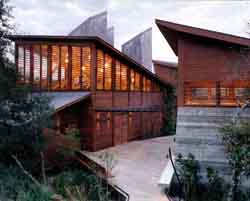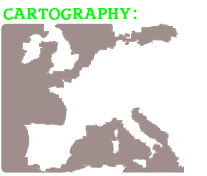ATLANTIC CENTRE FOR THE ARTS - FLORIDA

Contact
Name of the responsible structure : Atlantic Center for the Arts
Type of structure : Non Profit Corporation
Profile of the initiators of the project : artists collective
Continent : North America
Country : USA
Address/tel/fax : 1414 Art Center Avenue
New Smyrna Beach, Florida 32168
tel : + 1- 386-427-6975 or 800-393-6975
Fax : + 1 - 386-427-5669
Mail : program@altanticcenterforthearts.org
Website : www.atlanticcenterforthearts.org
Contact : Jim Frost

Description
Since 1982, Atlantic Center’s residency program has provided artists from all artistic disciplines with spaces to live, work, and collaborate during three-week residencies. Located just four miles from the east coast beaches of central Florida, the pine and palmetto wooded environment contains award-winning studios that include a resource library, painting studio, sculpture studio, music studio, dance studio, black box theater, writer’s studio, and digital computer lab. Each residency session includes three master artists of different disciplines. The master artists each personally select a group of associates - talented, emerging artists - through an application process administered by ACA. During the residency, artists participate in informal sessions with their group, collaborate on projects, and work independently. Atlantic Center for the Arts provides housing (private room/bath with work desk), weekday meals (provided by ACA chef) and 24 hour access to shared studio space.
Former use : always an artist community
Total surface of the site : 72 acres
Architect of the rehabilitation : Will Miller (phase 1 and 3), Thompson and Rose Architects (Phase 2)
Renovation costs of the building : 5 million dollars
Location : rural suburb
Foundation year of the centre : 1977, first residency in 1982
Type of occupation : owner owned
Owner of the building : Atlantic Center for the Arts

Infrastructures / Facilities
![]() Studio Complex
Studio Complex
Nestled on a 69-acre ecological preserve among the palmettos and pine forest on the edge of pristine Turnbull Bay, Atlantic Center for the Arts provides a tranquil yet stimulating setting that inspires artists from around the world to rejuvenate, collaborate and create. Envisioned and founded by environmentalist, painter and sculptor Doris Leeper in 1977, the artists-in-residence facility brings talented artists from different disciplines together to work with distinguished masters in the fields of visual, literary, performing and musical arts.
The original buildings, the Administration Building and Gallery, Whatmore Commons and Thompson Fieldhouse were built in 1982, and designed by architect Will Miller. Phase One of the $3.1 million Leeper Studio Complex began in September 1994, and included the construction of the black-box theater, the painting and music studios, and the renovation of the Whatmore Commons.
Phase Two construction began in March 1996, and included the addition of the dance studio, library and sculpture studio. All of the buildings are made of stained cedar, with lead-coated copper roofs, keeping true to the rustic Florida Cracker-style. Inspired by the site’s dense, jungle-like vegetation, Charles Rose and Maryann Thompson of the Cambridge, Mass., firm of Thompson & Rose Architects, designed the Leeper Studio Complex as separate structures connected by a winding boardwalk. Both separated and linked by the boardwalk and the jungle, the studios each afford the necessary privacy and spatial focus for individual creative activity while the boardwalk acts at once as theater, street and informal gathering area - a space for interdisciplinary discourse and collaboration at the Center. The firm has received numerous awards for the design of the Leeper Studio Complex.
Beginning in summer 2003 Atlantic Center for the Arts will start construction of a new Visitors Center. Architect Will Miller, the original architect responsible for the first buildings completed at ACA, will lead the project. The Visitor s Center will provide a destination for visitors to the Center and will have considerably increased office space, exhibition space, and meeting space.
![]() Ruth Scorgie Hubbard Music Studio
Ruth Scorgie Hubbard Music Studio
The 1,000 square-foot tower-like Music Studio was designed to be insular and uplifting. It is a vertical space without windows, but a large skylight connects the vertical space of the room to the sky. The acoustic-paneled and cedar walls reach skyward, with a tall roof monitor to admit daylight. Permanent sound panels were added in the skylight; other portable panels along the walls can be moved to affect the sound. The recording studio is outfitted with a wide-range of music and recording equipment.
![]() Wilkinson Resource Library
Wilkinson Resource Library
The 876-square foot library, overlooking Turnbull Bay, provides a large reading room lined with books on three walls with archival storage and video viewing facilities. The library also contains computers with access to the internet and printers, CD’s and video tapes. The library’s collection is continually growing through generous donations from artists in residence.
![]() Helene B. Roberson Dance Studio
Helene B. Roberson Dance Studio
The sprungwood floor of the 2,609-square foot Dance Studio is encircled by a ring of sand-blasted windows 15 feet above the floor, while a band of clear windows at the floor level looks out onto the densely textured vegetation and sentient landscape. The dancer, moving in the zone between these two windows, hovers between earth and sky. The walls are birch plywood, and an air return acts as a sculptural element, but functions as a bench. There are no windows on the areas adjacent to public walkways to ensure dancer’s privacy. However, the magnificent sliding doors lead to a semi-private deck and create a breathtaking connection to the environment.
![]() Writer’s Studio
Writer’s Studio
The 468 square foot writer’s studio features a unique floor to ceiling window that looks out onto the lush landscape of scrub oaks and palms. The studio, tucked away at the edge of the Roberson Dance Studio, is an open space, with multi-person work desk with printer/copier/scanner, a conference table and chairs, as well as comfortable furniture for reading, talking, or lounging. Writer’s use the studio to host meetings, individual conferences, or as a place to work.
![]() Charlotte Battle Everbach Painting Studio
Charlotte Battle Everbach Painting Studio
The 1,885-square foot Painting Studio is fitted with large northern exposure windows and light monitors that can be opened to provide natural ventilation, light and air. These monitors have glass roofs and allow light to enter from above while, at the same time, sidewall louvers can be opened to induce natural ventilation through the “stack effect.” The panels on the walls are made of replaceable homosote, and allow canvas to attach easily. Work tables, easels, and portable walls make the space extremely flexible and accommodating.
![]() Joan James Harris Theater
Joan James Harris Theater
The dramatic black box theater acts as a functional workspace for artists-in-residence as well as a performance space. Measuring 2,500 square feet, the design concept is to provide a space that can be manipulated to fit the changing needs of each residency. Events and performances are held in the round, as well as in a traditional theater-style seating arrangement. The theater is also equipped with a complex lighting grid, which is changeable with each residency. The gallery in the protruding glass lobby is used as a secondary exhibition space.

![]() Jim and Alexis Pugh Sculpture Studio
Jim and Alexis Pugh Sculpture Studio
The only concrete studio within the complex, the 1,233-square foot Sculpture Studio is symbolic of sculpture’s earthy materials - metal, stone and clay. The long overhang on the studio patio shelters an outdoor work area which is linked to the indoor space via three roll-up doors. When these doors are fully opened, the space flows easily from the interior to the exterior. The linking trellis structures also serve to blur the transitions between interior and exterior. The climatic conditions of East Central Florida - light, wind, air, rain - and their phenomenological effects are reinterpreted and tempered through the use of louvers, which mottle direct light. Large glass walls serve to maximize the ambient northern light; wind scoops help to ventilate, and also act as light monitors while large linear scuppers gather the torrential rain.
- Fieldhouse / Mac Lab
The fieldhouse, one of the original two studios at ACA, was originally a place for writers and composers to meet and work, as well as the kitchen for all artists in residence. Since the addition of the Leeper Studio Complex in 1996, the space now serves as the Mac Lab, a shared space for all artists in residence. The Mac Lab houses the vast majority of ACA’s technology equipment and has high-speed internet access, as well as additional access points for laptops.
Social and artistic disciplines
Visual, literary and performing arts
Financial support:
State, NEA, private contributions




